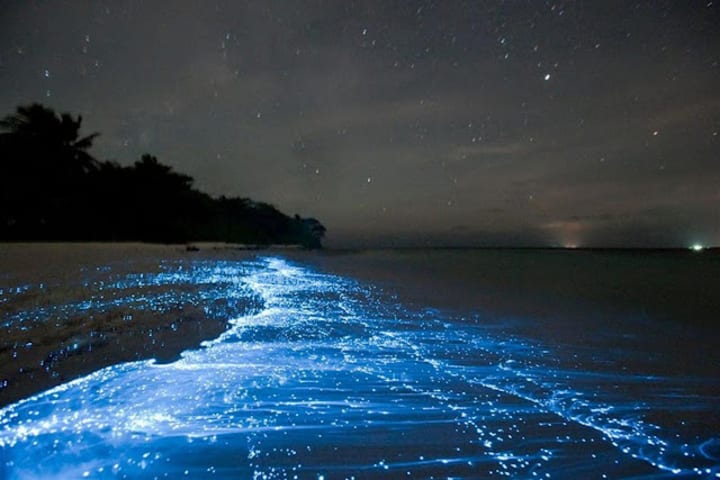Some of the Good, Interesting and Strangest places in the world
These will be your lovely places for having unique experience of travelling

Can you figure out where the above photograph depicts? .. Try to catch more details given at last section of this blog. Similar to these, many strange places, massive glaciers, towering mountains, and plains are populated with exotic animals: we certainly live in a vast and magnificent planet. In fact, looking at the world's most gorgeous sites might make choose where to go next seem difficult.
It would take a lifetime to track down all of Mother Nature's best hits of places. So here are some of the fascinating & strangest ones for you dear folks.. Which one will you travel to first?
1. Lavertezzo

This is a romantic town situated in Locarno district of Switzerland. It stands as a wonderful starting point for exploring the rustic and unspoiled Valle Verzasca and its offshoot valleys. The historic double-arched stone bridge across the Verzasca River is a favourite picture spot.
Lavertezzo is really a typical scenic town in Canton Ticino, with its characteristic stone structures, where tourists may eat risotto and other local specialties in a classic grotto. The 17th century double-arched Ponte dei Salti is the main object of attraction.
This stone bridge, also known as the Roman Bridge, spans the River Verzasca and was reconstructed in 1960 after falling into ruin. The Madonna degli Angeli Parish Church in Lavertezzo, built in the 18th century, is well worth seeing. It is the valley's lone baroque church.
2. Sea of stars

Vaadhoo Island is situated in the Maldives' Raa Atoll which stands for its impressive bioluminescence. The stunning "Sea of Stars" may be seen every year on this island, which is known for its bioluminescence plankton (Redhan). Vaadhoo is one of the most beautiful inhabited islands, with clean roads and white sand beaches, and its local tourist sector is predicted to flourish in the future years.
The 'sea of stars' on Vaadhoo Island is well-known. Dinoflagellates, a kind of phytoplankton, are responsible for this marine bioluminescence.
For the first time, Harvard University's Woodland Hastings has discovered a specific channel in the dinoflagellate cell membrane that reacts to electrical impulses, suggesting a possible mechanism for how the algae generate their distinctive light.
3. White desert Resort

Farafra Oasis is the starting point for a variety of fascinating journeys to the White and Black Deserts, as well as water wells and Crystal Mountain. It also serves as a gateway to important sites such as Farafra Palace, Qaser Abu Onkar, Roman temple remains, and other ancient rock-cut tombs. Farafra has a population of just 20,000 people due to its modest size and remote location in southern Egypt.
Around 100 water wells are scattered around Farafra's area, and they are utilised to assemble the oasis's cultivated land. The park is the site of large white chalk rock formations, created through erosion by wind and sand. It is also the site of cliffs (at the northern end of the Farafra Depression), sand dunes (part of the Great Sand Sea), as well as Wadi Hennis and oases at Ain El Maqfi and Ain El Wadi. Try the Omnichannel retail solutions
4. Konigsee Lake

Although there is a lot of competition, many people consider the Königssee to be Germany's most beautiful lake. After the surrounding Alpine scenery has been coated with snow, the snapshot displays a piece of the roughly 5-mile-long lake. The surroundings have a fjord-like aspect to them, with towering Bavarian Alps rising above the sea on all sides.
The Königssee is a rift lake in the country's far southeast corner, not far from the Austrian border and Salzburg. It is a natural lake in the German state of Bavaria's Berchtesgadener Land area, close to the Austrian border.
Berchtesgaden National Park encompasses the majority of the lake. Its cleanest—and the water's condition is so revered that only electric, paddle, or rowing vessels have been allowed to pass on it since 1909. This also keeps things quiet, which is beneficial while listening for the incredible echoes echoing off the surrounding rocks.
5. Boulders Beach

This serene beach is having its place in Simon's town of South africa. Commonly called as Boulder's bay. The name comes from a protected beach made up of inlets amid granite rocks. It's a famous tourist destination because to a colony of African penguins that arrived in 1982. Table Mountain National Park includes Boulders Beach.
These African penguins can only be found along the southern African coasts - (South Africa & Namibia). These penguins are on the verge of becoming extinct. As a result, the Cape Nature Conservation has taken steps to safeguard the penguins.
Despite being in the middle of a residential neighbourhood, it is one of the few places where this endangered species. Spheniscus demersus may be seen up close and roaming freely in a natural protected environment. On the other hand, False Bay has a number of tiny protected coves, some of which are partially encircled by 540 million-year-old granite rocks.
5. Kawah ijen volcano

On the Indonesian island of Java, the Kawah Ijen Volcano boasts two of the world's most extraordinary occurrences. The first is a live solfatara, which produces hot, combustible sulphur fumes. These burn with an electric blue blaze as they approach Earth's oxygen-rich atmosphere.
Some of the gas condenses in the atmosphere, resulting in molten sulphur flows that burn with an electric blue flame as well.
During the day, the flames are difficult to notice, but at night, they brighten the countryside. A one-kilometer-wide crater lake filled with turquoise-blue water is the second occurrence. The water's hue is caused by its high concentration of dissolved metals and excessive acidity.
With a pH as low as 0.5, it is the world's biggest severely acidic lake. An influx of hydrothermal fluids charged with gases from a heated magma chamber below is the source of its acidity. Go for extensive retail consulting services
6.Mendenhall Ice Caves
The ice caves within Juneau's Mendenhall Glacier are neither easy to reach or for the faint of heart—those who wish to view them in person must first kayak to the glacier and then ice climb to get there. But we're confident that once explorers stand beneath the glistening blue ceilings of ice, they'll tell you it was well worth the journey.
The Mendenhall Ice Caves, where water streams over rocks and under frozen bright-blue ceilings under a partially hollow glacier, have a magical quality to them. The Mendenhall Glacier is a 12-mile-long glacier in southeast Alaska's Mendenhall Valley, roughly 12 miles from Juneau. Sitaantaagu ("Glacier Behind the Town") and Aak'wtaaksit ("Glacier Behind the Little Lake") were the glacier's original names. The gorgeous blue ice inside the glacier is breathtaking.
7. Laguna Colorada
Laguna Colorada exists as a part of Ramsar wetland Los Lpez (previously Laguna Colorada).In 1990, it was designated as a "Ramsar Wetland of International Importance." This salt lake in the shadow of the Andes, about a three-hour drive north of Chile's San Pedro de Atacama, is noted for its blood-red waters, which are the product of algae that thrive in severe temperatures.
From December to April, the flamingos (and the lake) are at their best: the lake is full of water, making it more reflecting for pictures, and the birds are reproducing. Try to catch the lake around sunset, when it is at its most vibrant red. The lake has white borax islands that contrast with the lake's reddish tint, which is formed by red silt and pigmentation of some algae.
8. Zhangye Danxia Landform
The Rainbow Mountains of China, part of the Zhangye Danxia Landform Geological Park, encompass 220 square miles in Gansu Province, China's northwest. These iconic Chinese mountain geological wonders are recognised for their surreal colours, which resemble a rainbow painted across the summits of undulating mountains.
This is only one example of geology piqueing our interest and prompting us to wonder: What causes the Rainbow Mountains to be coloured the way they are? We have to look about the diagenetic and mineralogical processes that give reds, greens, yellows, and blues their colours. On April 23, 2012, the location was designated as a quasi-national geopark. After passing the on-site acceptance test, it was formally named as "Zhangye National Geopark" by the Ministry of Land and Resources on June 16, 2016.
In 2009, the monument was designated as a UNESCO World Heritage Site, and it is a popular tourist attraction for both Chinese and international visitors.
I will be updating you more exclusive places in this list definitely for you.. please visit again.
About the Creator
praveen.rajagopal
I am Crazy about dogs, nature, interiors, blogging including traveling . I treasure my family, true friendships & my loyal clients ... used to enjoy good movies, good wine and golf.






Comments
There are no comments for this story
Be the first to respond and start the conversation.